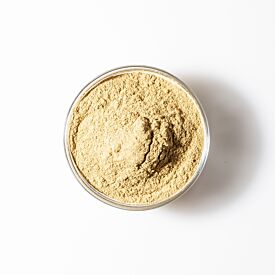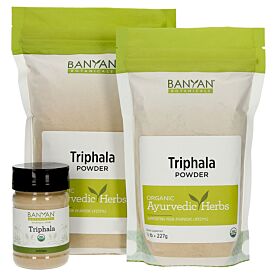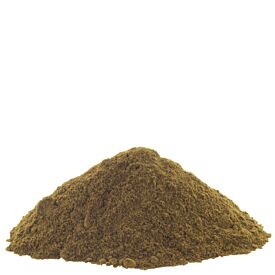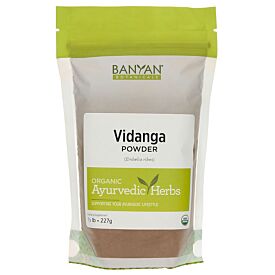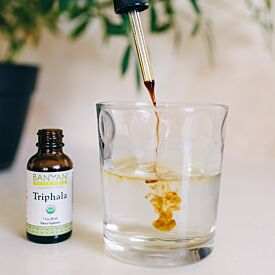Rejuvenative Formula Focus: Triphala
Triphala, one of the most widely used Ayurvedic formulations, is quite well known for its use in keeping bowel movements regular and healthy. In this article, we will look at the benefits of triphala related to one of its other major functions: rejuvenation.
In our hectic world, rejuvenation is publicly renowned as beneficial and crucial. But in the private lives of clients, it is often a luxury that is put on the back burner amongst the other essential tasks of the day. Even in the constant time crunch that everyone faces, it is necessary to find different and manageable ways to provide the body with the nourishment it needs to renew and refresh.
Rejuvenation
What does rejuvenation entail? The cells of the body are constantly changing, and they are being replaced at varying speeds (depending on the tissue) throughout one’s life. The life span of various cells ranges from days to months to years. As they age, die, and renew, rejuvenative therapies aim to provide optimal nutrition and an environment for these cells to repair damage and to thrive. This in turn allows our bodies to age with grace and vitality.
“Simply put, the essence of health is the constant renewal and rejuvenation of life.”
In Western terminology, one big factor affecting cell health is oxidative damage. Free radicals (unstable atoms or molecules) are formed by natural metabolic processes as well as by exposure to outside substances such as pollutants, tobacco and alcohol, and unhealthy foods. 1 In looking to stabilize themselves, these free radicals cause damage to cells (at the level of proteins, DNA, and cell membranes), leading to possible early cell death, cell malfunction, and overall ill health. Inflammation in the body works largely through these oxidative pathways, causing damage via these unstable radicals. 2, 3 Antioxidants (found in many rejuvenative treatments) help neutralize these free radicals, allowing cells to remain healthy and functional for their natural life span.
From an Ayurvedic perspective, it is important to remove ama (toxic build up) and provide nutrition for the cells to function properly. Ayurveda, of course, has many tools to help the cells and tissues rejuvenate: self-massage with oil, fresh and dosha-appropriate diet, yoga, pranayama, meditation, and various herbal remedies. Each of these methods helps to mitigate the damage to cells and provides nourishment for a healthier life cycle. For example, a small study in the Indian Journal of Physiology and Pharmacology shows the benefits of exercise and massage in reducing oxidative damage in the body. 4 Herbal formulas also provide an easy to use, quick method by which clients can add something rejuvenating to their hectic days.
Triphala
Out of the many rasayanas (rejuvenatives) that Ayurveda has to offer, let’s focus our attention on Triphala, which is a combination of haritaki, amalaki, and bibhitaki. These three components individually have tremendous benefits. Amalaki extract has been shown as a source of Vitamin C, Vitamin E-like activity, antioxidants and phenolic content. 5 It is particularly good at balancing pitta and cooling the system. Haritaki, often used to balance vata, has been shown to also support the body’s natural protective mechanisms,6 allowing the body to reduce stress and damage to the cells. And bibhitaki, with a specific affinity for balancing kapha, has also been studied as a source of natural antioxidants,7 even showing support of the body’s natural cell protective pathways in lung and breast tissue, two prime sites of kapha. 8
Combining the three ingredients, triphala is a tridoshic tonic,9 balancing vata, pitta, and kapha. It has been shown in numerous studies to support the natural antioxidant capabilities of the body,10, 11 as can be seen by a quick search on PubMed. In the Chikitsasthanam of the Charaka Samhita (verses 41–47), the text refers to numerous rejuvenative applications of triphala, with the benefits including support of longevity, intellect and memory, and overall health and vitality. For this rasayana effect, most of these recommendations suggest taking the triphala with a sweetener and fat, such as honey and ghee.
While some of these remedies are difficult (or not allowed) for practical use in the West, they are briefly described here for reference:12,13
- One haritaki fruit, two bibhitaki fruits, and four amalaki fruits after meals with honey and ghee: longevity and good health.
- Smear an iron plate with triphala paste, and after 24 hours, dissolve the paste in honey water; follow with a meal that has plenty of fat: longevity and good health.
- Triphala with the herbs madhuka, tugakshiri, and pippali, along with honey and ghee: rejuvenation.
- Triphala with sugar: rejuvenation.
- Triphala with all six metals and vacha with honey and ghee: intellect, memory, strength, longevity, vitality, and good health.
- Triphala with vidanga and pippali with honey and ghee: intellect, memory, strength, longevity, vitality, and good health.
- Triphala with lavana (rock salt) with honey and ghee: intellect, memory, strength, longevity, vitality, and good health.
In practice today, a frequent way that triphala is recommended for rejuvenation is simply to mix ½ teaspoon of triphala powder with ½ teaspoon of ghee and ½ teaspoon of honey, make a paste, and lick the paste every morning, consuming the whole mixture. This easy recipe can bring the many renewing benefits of triphala straight to your tissues every day.
References
1 http://web.stanford.edu/group/hopes/cgi-bin/hopes_test/about-free-radical-damage/
2 Conner EM, et al. Inflammation, free radicals, and antioxidants. Nutrition. 1996 Apr;12(4):274-7.
3 Khansari N, et al. Chronic inflammation and oxidative stress as a major cause of age-related diseases and cancer. Recent Pat Inflamm Allergy Drug Discov. 2009 Jan;3(1):73-80.
4 Karabulut AB, et al. The effect of regular exercise and massage on oxidant and antioxidant parameters. Indian J Physiol Pharmacol. 2013 Oct-Dec;57(4): 378-83.
5 Shukla V, et al. Evaluation of antioxidant profile and activity of Amalaki (Emblica Officinalis), spirulina, and wheat grass. Indian J Clin Biochem. 2009 Jan;24(1):70-5.
6 Majed F, et al. Terminalia Chebula Attenuates DMBA/Croton Oil-Induced Oxidative Stress and Inflammation in Swiss albino Mouse Skin. Toxicol Int. 2015 Jan-Apr;22(1)21-9.
7 Hazra B, et al. Comparative study of the antioxidant and reactive oxygen species scavenging properties in the extracts of the fruits of Terminalia chebula, Terminalia belerica and Emblica officinalis. BMC Complement Altern Med. 2010 May 13;10:20.
8 Ghate NB, et al. Alteration of Bax/Bcl-2 ratio contributes to Terminalia belerica-induced apoptosis in human lung and breast carcinoma. In Vitro Cell Dev Biol Anim. 2014 Jun;50(6):527-37.
9 http://www.ncbi.nlm.nih.gov/pubmed/26427099
10 Kalaiselvan S, et al. The anti-inflammatory effect of triphala in arthritic-induced rats. Pharm Biol. 2015 Jan;53(1):51-60.
11 Rayudu V, et al. Effect of Triphala on dextran-sulphate sodium-induced colitis in rats. Ayu. 2014 Jul-Sep;35(3):333-8.
12 Sharma, P.V. Caraka Samhita. P. 24-25.
13 Valiathan, M.S. The Legacy of Caraka. P. 240.





